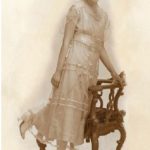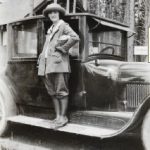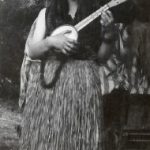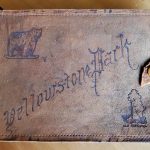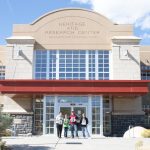By Jane Benson
My 91-year-old mother, Marguerite (Mugs) Bachhuber, came to live with my husband and me in May 2020 as a protective measure, knowing she was more vulnerable to the COVID-19 virus at the assisted living facility where she was staying, and the vaccine was not available yet.
While she was with us, she decided on a “project” to bring her joy during the months of lockdown. Boxes of very old family photos came out, and the time travel began.
Mom loves music and told us many times that her mother was the Activities Director at Yellowstone National Park, America’s very first national park. We thought the idea of that was great, but now Mom began to uncover photos of her mother, Vera (nee Chamberlain, then Theiler), as she performed and lived at Yellowstone during the early 1920s. Vera had already survived the Spanish Flu pandemic, and WWI was over. It was the start of the Roaring ‘20s, and women’s roles in society were changing dramatically.
Vera was studying Music Education at Lawrence University Conservatory of Music in Appleton, Wis., when the call came out from Yellowstone Park that they were looking for music students who would work part-time jobs during the day and then perform for park visitors in the evenings.
Vera took a steam train from Wisconsin to the park area. She waited tables during the days and performed with a troupe of fellow workers at night. She was famous for writing parodies of songs for sing-alongs and wrote funny skits to delight visitors.
After Mom uncovered some great photos of Vera, we found out that Mom’s sister, Jane Klawitter, had an original, leather-bound scrapbook Vera had put together of a summer in Yellowstone. It was filled with classic photos and Vera’s handwritten notes on each page.
In Sept. 2021, my husband and I traveled to Yellowstone for a long-planned trip with our son’s family. As part of the trip, we went to the Heritage and Research Center, and took a photo of three generations of Vera’s descendants before we went inside.
We submitted the loose photos, a biography of Vera and the nearly-100-year-old scrapbook to the research center with the hope that they might find the materials historically valuable. We recently received a letter from the Superintendent of the National Park Service, stating, “The material is an important addition to the park’s museum and archives collections, and will be preserved and made available for future researchers and exhibits. The material captures an uncommon glimpse of what life was like for young women working and performing musically in the park in the 1920s.”
My mother’s and her sister’s travel through time brought Yellowstone alive for us as Vera’s images and words jumped off the pages of history. The trip reminded us that other generations have also survived pandemics and created vivid, full lives to inspire us.

